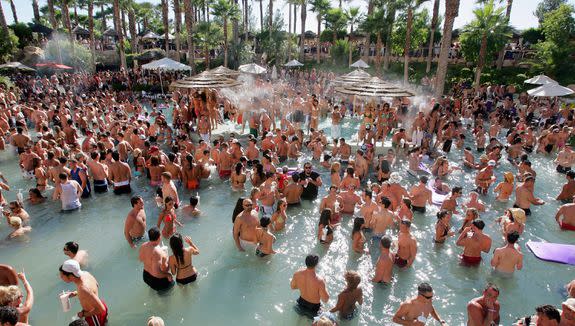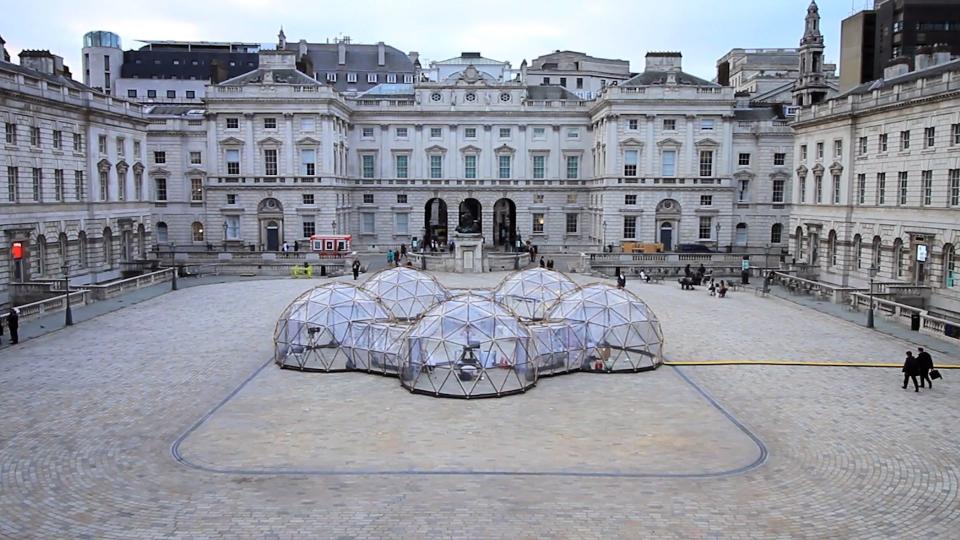Your international vacation is a whole lot worse for the planet than we thought

Tourism is unquestionably beneficial to both economies and anyone seeking to visit new lands.
However, your international vacation has a serious dark side.
A new study published this week in the journal Nature Climate Change suggests that vacationing actually releases far more climate change-inducing greenhouse gases into Earth's atmosphere than previously expected.
SEE ALSO: The Great Barrier Reef may never recover from the devastating 2016 heat wave
When taking into account not only the direct emissions from jet and automobile engines, but also the millions of supply chains needed to feed and support vacationers, researchers found that global tourism today generates 8 percent of the carbon we send into Earth’s atmosphere each year.
Previous studies put estimates at around 3 percent, Arunima Malik, lead author of the study, said in an interview.
“This is the first study that puts out a comprehensive assessment," added Malik, a researcher at the Integrated Sustainability Analysis program at the University of Sydney. "It’s very much a conversation starter.”
These emissions are expected to balloon as travel surges globally, especially when the U.S. is no longer mired in a deep recession.
In 2009, global travel spending hit $2.5 trillion. Four years later, in 2013, this number spiked to $4.7 billion. As expected, emissions during this period followed suit, according to the study.
The new research arrives a week after scientists confirmed that Earth’s atmosphere is packed with the highest-ever concentration of carbon dioxide in the last 800,000 years.
Tourism may just be one part of today’s greater carbon dioxide problem, but it’s a substantial one — and a greater threat than we imagined.
Where is all this vacation carbon coming from?
Unsurprisingly, the U.S. topped the list of the globe's carbon tourism producers. Germany joins America in the top four, along with China and India, two nations with burgeoning middle classes, whose ability to afford travel is anticipated to grow.
After including transportation, utilities, food sources (agricultural), commodities, and other tourism needs met between 2009 and 2013, Malik and her team found that over 70 percent of emissions came from the combustion of fuels (to power hotels and fuel jet engines) and “land-use changes,” like razing carbon dioxide-eating forests for pasture land.
The leftover emissions were largely methane gas (also a carbon-based greenhouse gas) belched from cows and released into the air by gas companies pumping oil out of the ground.
These total emission numbers may be eye-opening, but perhaps they shouldn’t be too shocking.
Some researchers already suspected that we were grossly underselling the net effect of tourism, said Michael Hall, who researches the effects of tourism at the University of Canterbury, via email.

Image: Ethan Miller/Getty Images
The study concluded that this growth was stoked by affluence, specifically a “desire for exotic travel experiences and an increasing reliance on aviation and luxury amenities.”
But, “that is only a part of the story,” said Hall, who had no involvement with the study.
Sure, luxury travel contributes its share, but vast swathes of greater society now frequently travel long distances for much more mundane reasons.
“Travel is also driven by business connectivity as well as by visiting friends and relations — which are not particularly exotic,” said Hall.
And unlike choosing to vacation in Tahiti to sip cocktails on white sand beaches, this type of utility travel can often require travelling longer distances, and using more fossil fuels. There simply isn’t another destination option when flying for a funeral or family wedding, said Hall.
Aviation itself — which includes flying and all the other comforts supplied — accounts for 12 percent of global tourism emissions, said Malik.
In total, this is no insignificant amount, but it shows how much else contributes to the greater tourism footprint, like trucking in food, raising livestock, manufacturing souvenirs, and generating energy for resorts and hotels.
The problem isn’t being solved
The entire tourism industry is widely expected to grow as millions more people are able to afford travel, especially in increasingly developed areas like India and China. Accordingly, carbon emissions will grow, but there’s little global incentive to mitigate the problem.
“Most governments are burying their head in the sand,” said Hall.
A glaring example is the aviation industry, which burns dirty, carbon-rich fuel.
“Right now, polluting is basically free,” Dan Rutherford, the International Council on Clean Transportation’s program director for marine and aviation, said in an interview.
Unlike the marine industry, which last month adopted an ambitious plan to progressively slash carbon emissions over the next few decades, the aviation industry doesn’t yet have a meaningful plan to reduce emissions.
Instead, there is a plan to buy carbon off-sets, which means funding clean-energy projects to “offset” the carbon emissions produced by things like jet engines. Carbon offsets can provide important funding for expensive renewable energy infrastructure, but they don't directly slash emissions the way a plane that runs on alternative fuels or a factory that runs wind energy might.
There are also fuel efficiency standards for new planes, which would decrease the amount of fuel burned each flight.
But these efficiency gains “are being overwhelmed by the increase in flying,” said Rutherford, who was not involved in the new study.

Image: Getty Images
Carbon pollution expelled into the air at some 35,000 feet is impossible notice, and no one is eager to take responsibility for it.
“You’ve got these emissions in airspace, and countries don’t want to claim them,” said Rutherford. “There is a kind of systematic denial going on.”
But you can limit your tourism impact
Instead of only waiting for the slow, grinding wheels of governments to agree on a carbon-slashing scheme, Malik said she hopes this study will encourage people to independently “become more aware,” and make their own informed choices.
Realistically, this means travelling more domestically, rather than flying abroad.
“Encouraging people to travel domestically as a substitute for international travel is a no-brainer,” said Hall. “Keep the expenditure at home and lower emissions.”
Vacationing closer to home might mean missing out on some island vacations, but this could also help these low-lying, tropical places out, particularly those most susceptible to rising seas.
“Our holiday destinations that we love," Malik said, "are vulnerable to the effects of these emissions."
WATCH: From Norway to India, these ‘pollution pods’ let you sample the worst and the best air quality of cities around the world


